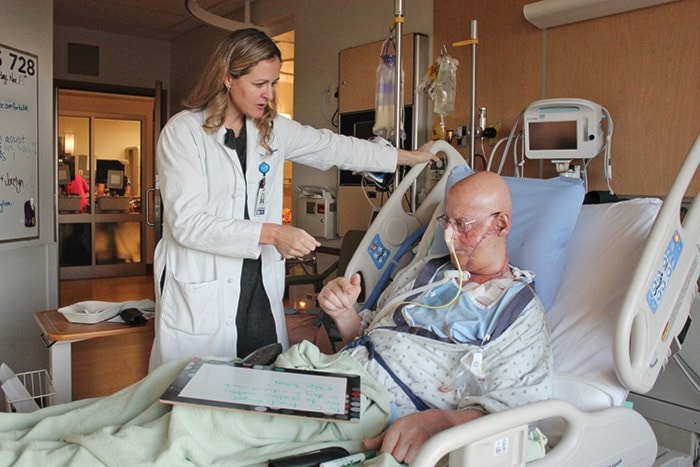When Dr. Jennifer Robinson is in the operating room, not much can scare her anymore.
Working as a plastic surgeon at Royal Jubilee Hospital, dressed in teal scrubs and a multi-coloured cap, Robinson has seen her fair share of surgeries in the seven years she's been in Victoria. She's been a part of countless surgeries ranging from hand trauma surgeries, such as replanting fingers and fixing fractures, to post-cancer breast and head and neck reconstructions.
The Victoria resident begins her day like any other mother, waking up, spending time with her husband and children, ages two and three, before heading off to work with her small black suitcase filled with a microsurgeon's pack, magnifiers and prescription pads in tow.
Once she steps into the hospital, Robinson's real work begins. She starts with rounds to check on patients, before heading into the OR. Some days are longer than others for Robinson, sometimes she'll have one long nine-hour surgery and on other days she'll have four or five surgeries. She often works 12-hour shifts, and finds time to eat and sleep whenever she can in between.
Being a plastic surgeon can be physically and emotionally draining, Robinson admits, but helping her patients far outweighs other aspects of the job.
“I love what I do, it's simply that,” Robinson said.
Robinson's love for surgery began years ago, after volunteering in a clinic in Kenya. It was there the Ontario-native realized she wanted to deliver medical care to people.
Shortly after, she completed medical school at McMaster University, and did her residency training at the University of Western Ontario, where she was also a varsity athlete. Robinson eventually specialized in cancer reconstruction at the University of Texas MC Anderson Cancer Centre.
Robinson, who is technically-minded, enjoys the restoration that comes along with plastic surgery, and the concept that people were leaving her hands better off than when they came to her. It also allowed her to collaborate with different surgeons on a wide variety of cases.
“It's highly technical in micro surgery and every case is very different. There's a lot of imagination, planning and art that has to go into that,” Robinson said.
“It's an incredibly deep sense of satisfaction. If you're creating something and doing something with your hands, there's a sense of accomplishment at the end of it. Patients are incredibly grateful and I'm incredibly fulfilled by all of the interactions I have with patients.”
Now, roughly two decades since she started medical school, Robinson is leading the way in microsurgery in Victoria.
Robinson does a number of other surgeries including aesthetic and cosmetic plastic surgery, such as face and breast lifts, and was one of the first plastic surgeons on Vancouver Island to do transgender surgeries, which she has been doing for the past year.
Unlike other specialities, plastics operates in principals rather than surgeries. In orthopaedics, surgeons have specific ways of dealing with hip replacements or fractures. However, in plastics, every case is about taking a concept — separating one thing from another — and designing an operation to achieve the goal. Thought must be put into every single case, said Robinson.
In one recent case, patient Ron Willems came to Robinson after his doctor removed skin cancer from his left eyebrow. Shortly after, a mass appeared on his cheek that was eroding through his skin. Working with a fellow doctor, who removed the mass, Robinson resurfaced the damaged area, transplanting skin and fat from his thigh to his face.
She identified blood vessels in the neck and, using a microscope, sewed together an artery and a vein, similar to an organ transplant. The surgery took roughly nine hours from beginning to end.
“Instead of a solid organ, it's a surface organ. Skin is the largest organ in the body and it's an important one to be able to transplant,” Robinson said. “You start when you start and you finish when you finish. You're not watching the clock.”
The first few years of being a plastic surgeon, Robinson admits she was nervous stepping into the OR, but now she's ready for the challenge day after day.
